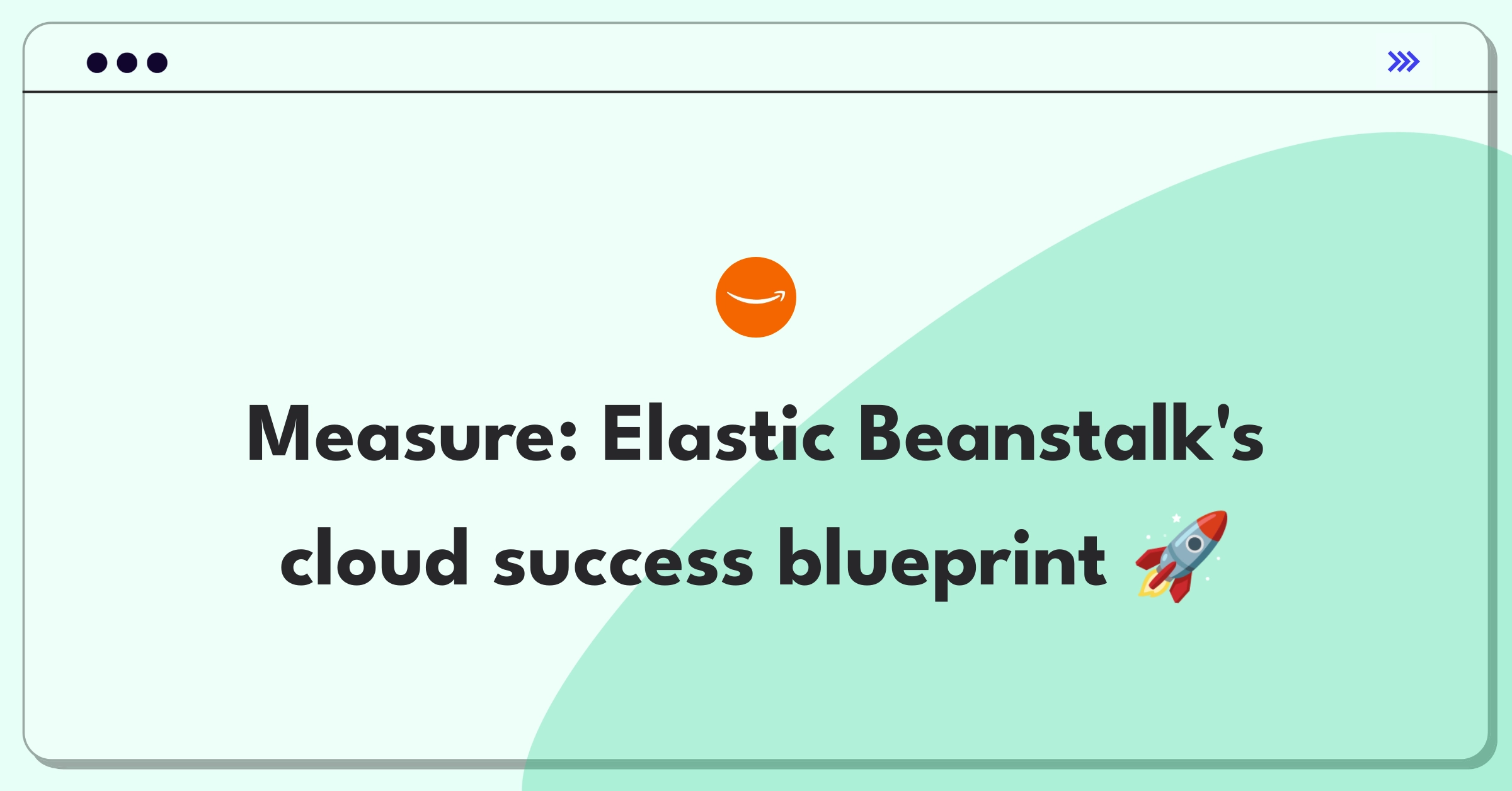Introduction
Defining the success of Amazon's AWS Elastic Beanstalk platform requires a comprehensive approach that considers multiple stakeholders and metrics. To effectively evaluate this product success metrics problem, I'll follow a structured framework covering core metrics, supporting indicators, and risk factors while considering all key stakeholders.
Framework Overview
I'll follow a simple success metrics framework covering product context, success metrics hierarchy.
Step 1
Product Context
AWS Elastic Beanstalk is a fully managed service that makes it easy for developers to deploy and run applications in the cloud. It automatically handles the details of capacity provisioning, load balancing, scaling, and application health monitoring.
Key stakeholders include:
- Developers: Seeking to simplify application deployment and management
- DevOps teams: Looking to streamline operations and reduce infrastructure overhead
- Business decision-makers: Aiming to reduce costs and improve time-to-market
- Amazon: Wanting to increase AWS adoption and revenue
User flow:
- Developers upload their application code
- Elastic Beanstalk automatically handles deployment details
- The platform manages ongoing operations, scaling, and monitoring
Elastic Beanstalk fits into Amazon's broader strategy of making cloud services more accessible and reducing barriers to entry for businesses of all sizes. Compared to competitors like Heroku or Google App Engine, Elastic Beanstalk offers tighter integration with other AWS services and more granular control over the underlying infrastructure.
Product Lifecycle Stage: Elastic Beanstalk is in the maturity stage, with a stable user base and established feature set. However, it continues to evolve with new integrations and capabilities.
Subscribe to access the full answer
Monthly Plan
The perfect plan for PMs who are in the final leg of their interview preparation
$99 /month
- Access to 8,000+ PM Questions
- 10 AI resume reviews credits
- Access to company guides
- Basic email support
- Access to community Q&A
Yearly Plan
The ultimate plan for aspiring PMs, SPMs and those preparing for big-tech
$99 $33 /month
- Everything in monthly plan
- Priority queue for AI resume review
- Monthly/Weekly newsletters
- Access to premium features
- Priority response to requested question


.png)